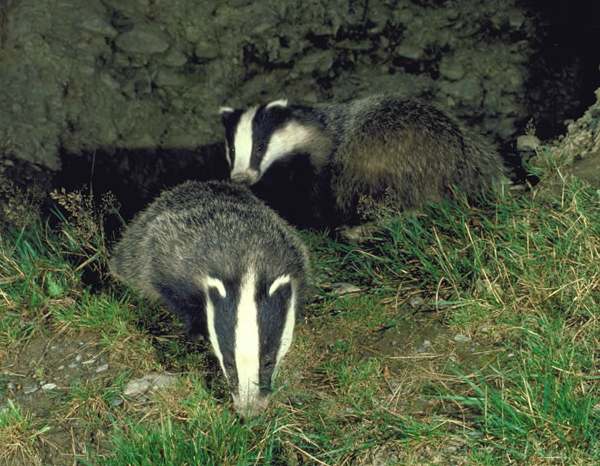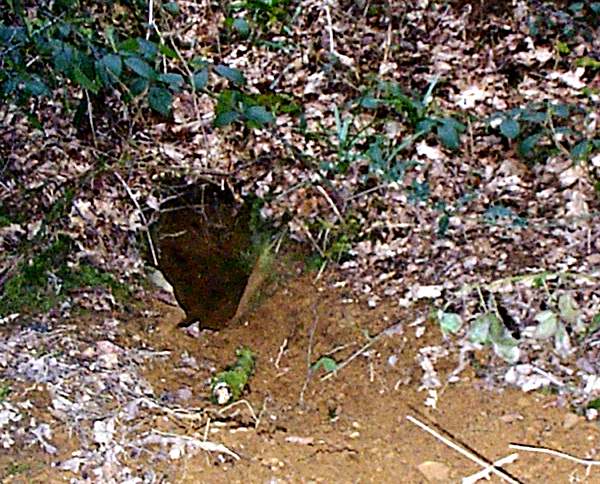Trees Birds Mammals Fish Amphibians Reptiles
Wild Algarve
Bookshop
Meles meles - Badger
Phylum: Chordata - Class: Mammalia - Order: Carnivora - Family: Mustelidae

Badgers are found throughout England, Wales and Scotland,
but the countryside of Wales and its relatively mild climate suit them
particularly well. They particularly favour wooded areas with grassland
alongside, and this makes West Wales in particular a very good place to go
if you hope to see a badger in the wild. Badgers vary greatly in size,
with an adult head and body length of 60 to 90 cm; they weight between 7
and 24 kg. (Males, known as boars, are slightly larger than females, which are referred to as sows.)
Most of the daytime, Badgers remain underground, either in
natural crevices or, most commonly, in tunnels, called setts, which they
excavate. Several families of badgers may share such a home. A Badger sett
comprises a complex system of tunnels, often twenty metres long and as
deep as three metres below the surface. Where their tunnels are only
shallow, they sometimes push rocks up above the surface, and harvesting
machinery is sometimes damaged as a result of the rotating blades or drums
hitting rocks hidden among the corn.

Although Badgers eat worms, frogs, birds' eggs, and small
mammals and even carrion, they also forage for roots and berries. Because
their diet it so varied, Badgers do not need to travel great distances
when out on their nocturnal feeding forays, and it is rare for them to go
more than a few kilometres from their home.
From late October to late December, Badgers sleep for an
increasing amount of the time, but even then in mild weather they wake up
and go out in search of food. They become very active from February
onwards, and a litter of one to five badger cubs is born in spring. The
young are blind at birth and remain in the sett for the first two months of their lives.. By late summer the cubs are able to fend for
themselves, but it is common for them to remain with the mother through
their first winter.
Acknowledgements
This page includes pictures kindly contributed by the Countryside Council for Wales.